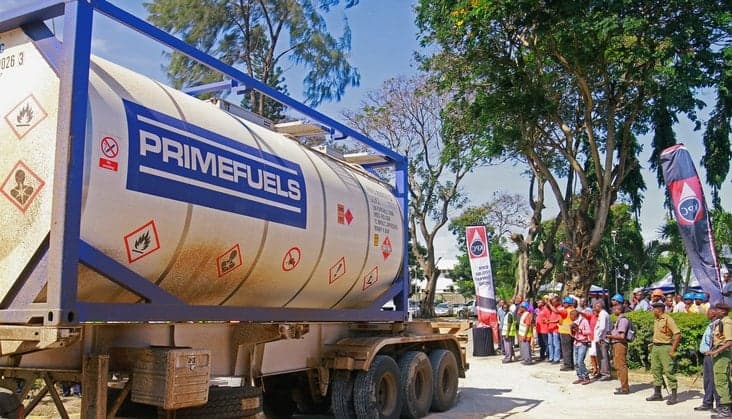Loading News Article...
We're loading the full news article for you. This includes the article content, images, author information, and related articles.
We're loading the full news article for you. This includes the article content, images, author information, and related articles.
The government confirms an initial plan to transport crude oil from Turkana to Mombasa by road to fast-track production and defer the multi-billion shilling cost of a pipeline. This interim measure aims to begin commercial exports by December 2026.

Kenya will transport crude oil from the Turkana fields to Mombasa via road tankers for the first two years of production, a strategic move to accelerate the start of commercial exports while postponing the significant financial investment required for a permanent pipeline. Energy and Petroleum Cabinet Secretary Opiyo Wandayi confirmed this plan on Monday, November 24, 2025, stating that the initial phase will target production of approximately 20,000 barrels per day (bpd).
This decision allows the country to move forward with its long-delayed oil production ambitions, targeting the first commercial oil exports by December 2026. The trucking model circumvents the immediate need for the estimated $3.4 billion (KSh 440.8 billion) required to construct the proposed 892-kilometre heated pipeline from the South Lokichar Basin to a new terminal at the Port of Lamu. “During the first phase of this project we are going to do trucking. Of course, there are other opportunities in the future to do other infrastructure like the pipeline,” Mr. Wandayi stated.
The announcement follows a significant reset of Project Oil Kenya. After years of delays that saw original partners like TotalEnergies and Africa Oil exit, the project's operator, Tullow Oil, sold its entire stake in the Kenyan venture to Gulf Energy Ltd in a deal worth at least $120 million in April 2025. This transition to a Kenyan-owned operator has injected new momentum into the project.
In early November 2025, CS Wandayi announced the government's formal approval of the Field Development Plan (FDP) submitted by Gulf Energy. The plan, which is now awaiting parliamentary ratification, outlines a phased development of six oil discoveries in the Lokichar Basin. The entire project is estimated to require a $6.1 billion investment over its 25-year contract period, targeting recoverable reserves of 326 million barrels. The initial phase aims for 20,000 bpd, with a potential ramp-up to 50,000 bpd in a second phase.
This is not the first time Kenya has used trucks to transport its crude. Between 2018 and 2020, the country ran an Early Oil Pilot Scheme (EOPS) which involved trucking oil produced during the appraisal phase to the Kenya Petroleum Refineries Limited (KPRL) facility in Mombasa. In August 2019, Kenya exported its first-ever shipment of 240,000 barrels, earning the country Sh1.48 billion. The EOPS, however, highlighted the logistical and economic challenges of road transport. Studies have shown that trucking crude oil can be four times more expensive than using a pipeline. The waxy nature of Turkana crude requires it to be transported in heated tankers to maintain a liquid state, adding to the complexity and cost.
Furthermore, the EOPS was plagued by interruptions, including community protests and concerns over road conditions, which at times halted operations and led to financial losses. Environmental and safety risks are also significant, with the potential for spills along the nearly 1,100-kilometre route from Lokichar to Mombasa. Past incidents of fuel tanker accidents on Kenyan highways underscore the potential dangers.
Despite the interim trucking plan, the construction of the Lokichar-Lamu pipeline remains the long-term objective for achieving full-scale, economically viable production, which could eventually reach up to 100,000 bpd. The pipeline is a critical component of the wider Lamu Port-South Sudan-Ethiopia-Transport (LAPSSET) corridor project. Its successful implementation is seen as key to establishing Kenya as a significant player in the East African energy market, alongside neighbouring Uganda and South Sudan. The project's success could enhance regional trade and attract further foreign investment into Kenya's energy sector. However, Kenya faces stiff competition, notably from the nearly complete East African Crude Oil Pipeline (EACOP) which will transport Ugandan oil to the Tanzanian port of Tanga, a project Kenya had initially hoped to partner on.
As Gulf Energy prepares to commence operations, all eyes will be on the logistical execution of the trucking phase and the government's ability to secure the necessary financing and parliamentary approvals for the eventual pipeline, which will be the ultimate determinant of Kenya's success as an oil-exporting nation.
Keep the conversation in one place—threads here stay linked to the story and in the forums.
Other hot threads
E-sports and Gaming Community in Kenya
Active 6 months ago
Popular Recreational Activities Across Counties
Active 6 months ago
Investing in Youth Sports Development Programs
Active 6 months ago
The Role of Technology in Modern Agriculture (AgriTech)
Active 6 months ago